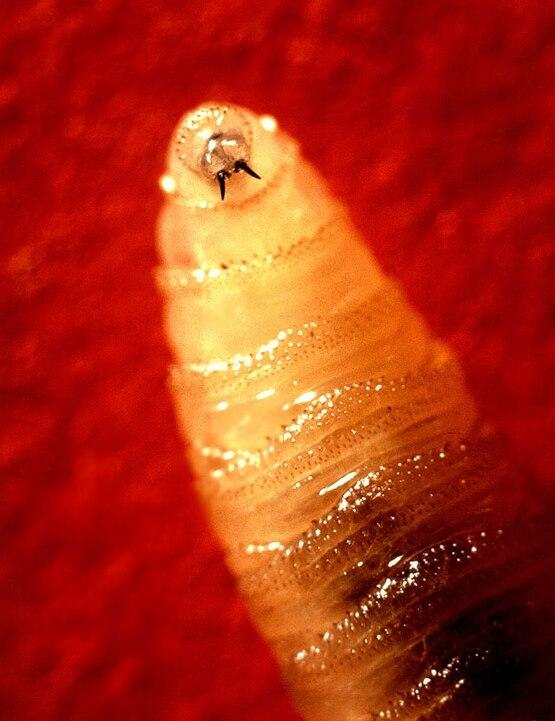A case of potentially deadly flesh-eating screwworm parasite has been detected in a person in the US for the first time in years, the US Department of Health and Human Services confirmed on Sunday.
The new world screwworm (NWS) infestation was reportedly detected in the patient in Maryland after he returned from El Salvador.
“This is the first human case of travel-associated New World screwworm myiasis (parasitic infestation of fly larvae) from an outbreak-affected country identified in the US,” HHS spokesperson Andrew Nixon said in an emailed statement, according to Reuters.
Infestation occurs as the fly maggots “burrow into the flesh” and cause “serious, often deadly damage to the animal” that can, “in rare cases”, also include people, the US Department of Agriculture warned in May.
The Maryland patient was reportedly diagnosed via a review of submitted larval images.

There are currently no FDA-approved drugs for NWS in the US.
Although eradicated from North America decades ago, worm infestation of cattle has surged in South America in recent years, with trends of it moving northwards.
Detections of the parasite surged dramatically in Panama in 2023, with subsequent cases reported in Costa Rica, Nicaragua, Honduras, Guatemala, Belize, El Salvador, and Mexico in 2024.
“New World screwworm is an aggressive parasite. Larvae don’t wait for dead flesh, they create it,” said Brianna Schur, deputy administrator for USDA’s Animal and Plant Health Inspection’s Veterinary Services.
Typically found in South America and the Caribbean, the CDC noted that people in the US are at higher risk for NWS if they “travel in these areas, are around livestock in rural areas where the flies are,” and if they “have an open wound”.
“Wounds as small as a tick bite may attract a female fly to feed and lay her eggs. One female can lay 200 to 300 eggs at a time and may lay up to 3,000 eggs during her 10- to 30-day lifespan,” according to the CDC.
“Infestations are very painful. If you have an NWS infestation, you may see maggots around or in an open wound. They could also be in your nose, eyes, or mouth,” the US health agency warned.
Skin wounds or sores can worsen over time with a foul-smelling odour stemming from the infestation site, it said.
The US suspended imports of livestock, including cattle, horses, and bison, across the southern border with Mexico earlier this year due to the northward spread of the parasite.
“It is not only a threat to our ranching community, but it is a threat to our food supply and our national security,” the USDA warned.
Part of the US plan to counter the fly’s spread is to build the country’s first sterile fly production facility in Texas.
The $8.5m sterile fly dispersal facility under construction would take larvae produced in Panama or Mexico, grow them to produce hatched sterile male flies.
The sterile male flies would be released into the wild to mate with NWS fly females, which reproduce only once.
